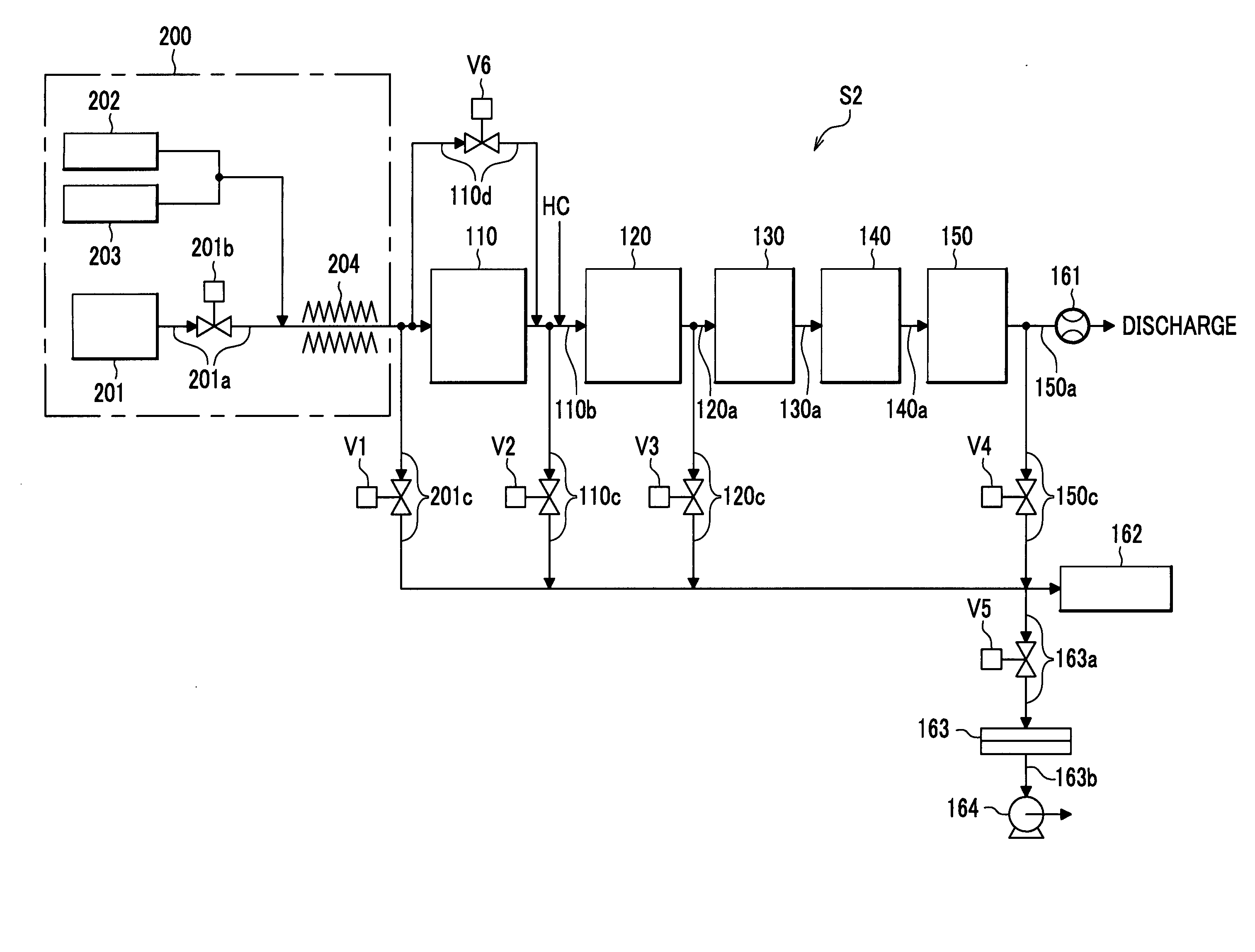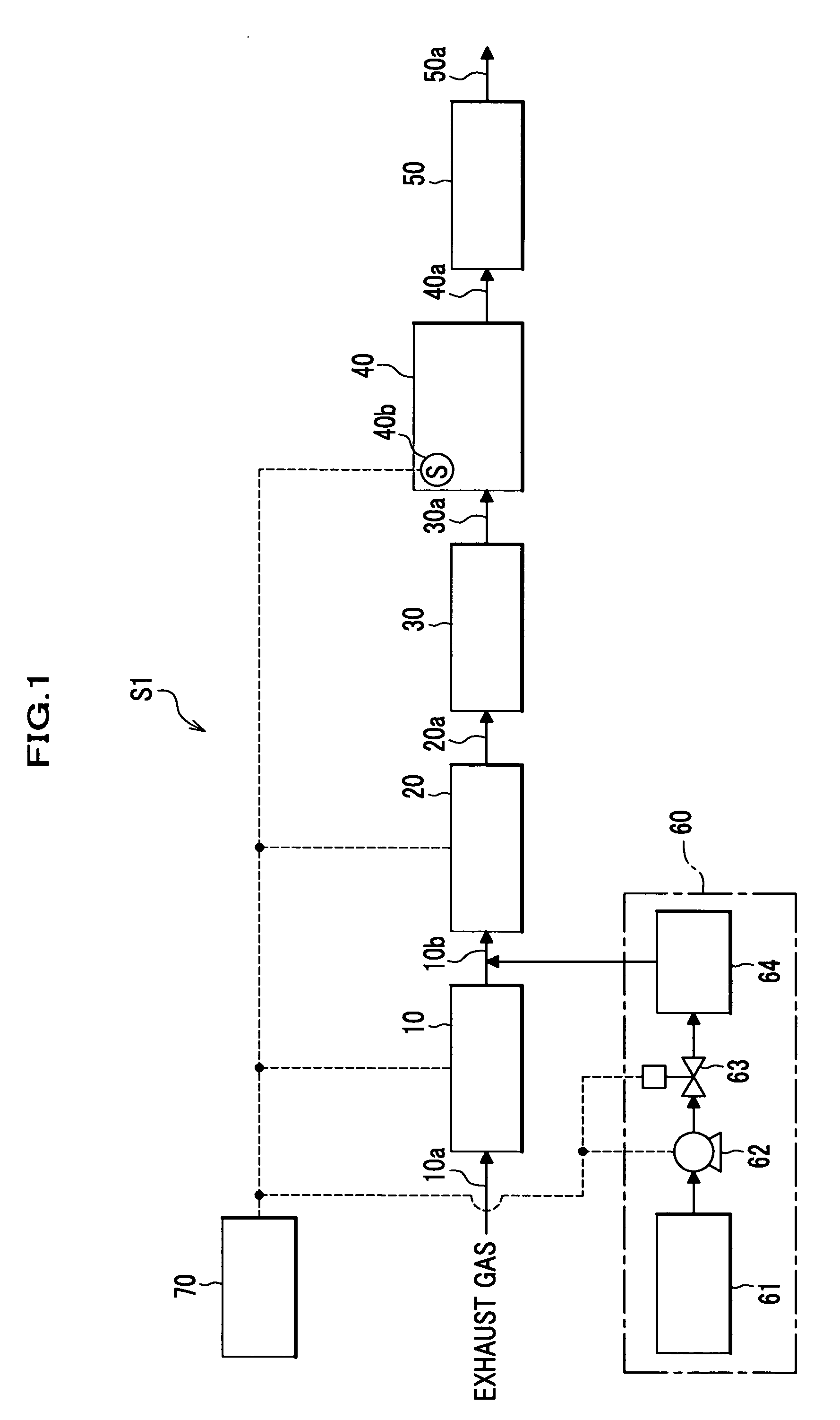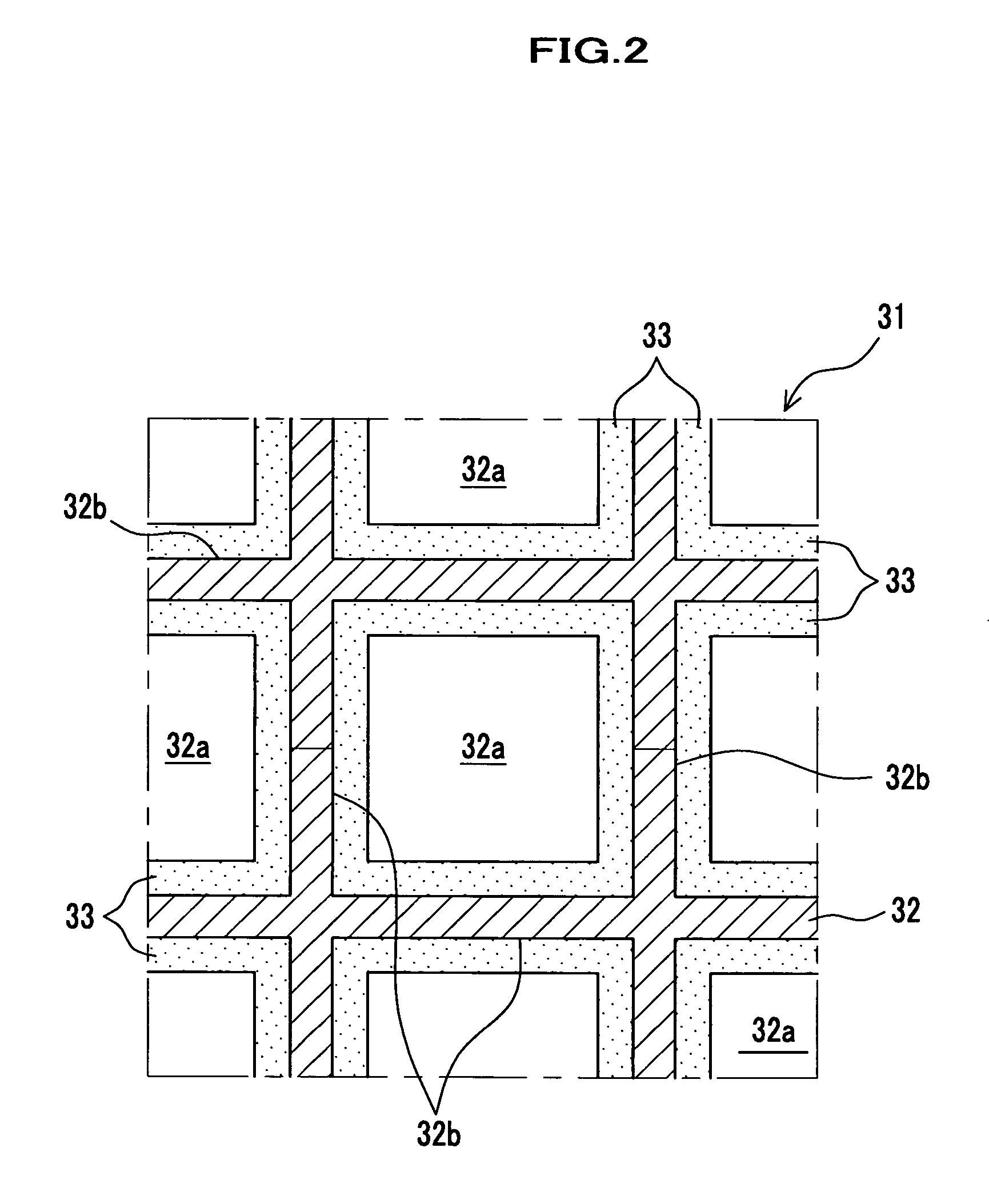System and method for purifying an exhaust gas
a technology of system and method, applied in the direction of machines/engines, separation processes, mechanical equipment, etc., can solve the problems of affecting the purification effect of exhaust gas
- Summary
- Abstract
- Description
- Claims
- Application Information
AI Technical Summary
Benefits of technology
Problems solved by technology
Method used
Image
Examples
example 1
(3-1) Example 1
[0118] Taking into account the power density of plasma space described above, 6.0 and 2.2 (W / cm3) were selected for the first and second plasma units 110 and 120, respectively, in an example 1. In setting these values, sinusoidal alternating current of 600 Hz was imposed on the first plasma unit 110 at AC voltage of 6.6 kVpp and resulting current of 15 mArms was observed. For the second plasma unit 120, AC current of 800 Hz was imposed at 9.2 kVpp and current of 5.3 mArms was observed.
[0119] An exhaust gas, which was discharged from a diesel engine whose characteristics are shown in FIG. 7, was brought into the system S2 for purifying an exhaust gas. Measurement was conducted for acquiring data to be used for calculation of rates for purification of PM and NOx based on expressions (1) and (3), while opening and closing of the valves V1, V4 and V5 were selectively controlled. γ=m5-m6m5×100(3)
where γ represents a rate for purification of NOx in the form of percentage...
example 2
(3-2) Example 2
[0121] Power densities of plasma space of 8.0 and 2.2 (W / cm3) were selected for the first and second plasma units 110 and 120, respectively, in an example 2. In setting these values, sinusoidal alternating current of 3000 Hz was imposed on the first plasma unit 110 at AC voltage of 7.0 kVpp and resulting current of 30 mArms was observed. The same conditions as those of the example 1 were selected for the second plasma unit 120.
[0122] Measurement was conducted for rates for purification of PM and NOx in the same manner as those of the example 1. Results of measurement are shown in FIG. 6.
example 3
(3-3) Example 3
[0123] An example 3 provides a case to be compared with the examples 1 and 2, where the first and second plasma units 110 and 120 were not brought to operation and addition of HC was not carried out in the system S2 for purifying an exhaust gas. Results of measurement are shown in FIG. 6.
[0124] Conditions of the first and second plasma unit 110 and 120 for the examples 1, 2 and 3 are summarized in FIG. 9.
(4) Results
[0125] As obviously seen from FIG. 6, the examples 1 and 2 are able to provide better purification of an exhaust gas, which achieves rates for purification of PM and NOx not less than 80%. In contrast, the example 3 shows inferior results, a remarkably low rate of 30% for purification of PM and a rate of 60% for purification of NOx.
PUM
 Login to View More
Login to View More Abstract
Description
Claims
Application Information
 Login to View More
Login to View More - R&D
- Intellectual Property
- Life Sciences
- Materials
- Tech Scout
- Unparalleled Data Quality
- Higher Quality Content
- 60% Fewer Hallucinations
Browse by: Latest US Patents, China's latest patents, Technical Efficacy Thesaurus, Application Domain, Technology Topic, Popular Technical Reports.
© 2025 PatSnap. All rights reserved.Legal|Privacy policy|Modern Slavery Act Transparency Statement|Sitemap|About US| Contact US: help@patsnap.com



